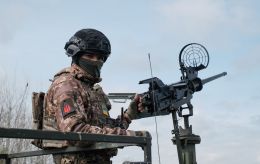Russia builds up forces: What’s happening in Sumy and how far they've advanced
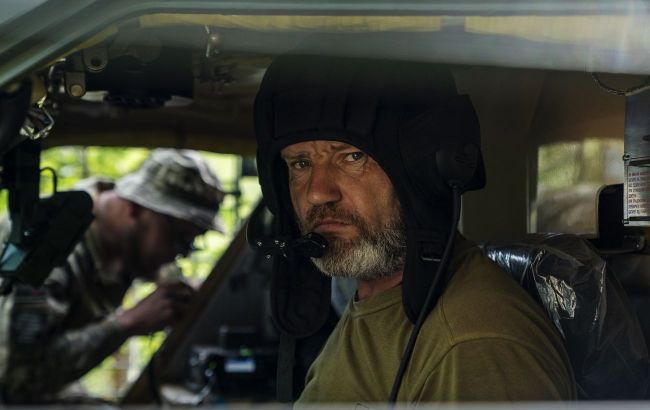 Photo: The situation in the Sumy region's border area has escalated (Getty Images)
Photo: The situation in the Sumy region's border area has escalated (Getty Images)
Russian forces have stepped up their attempts to break through in the Sumy region, using small assault groups. Recently, the enemy managed to gain a foothold in several border villages of the region and is now trying to expand its advance.
What's happening in the Sumy region, where the enemy has reached, and what is its goal - read in the material by RBC-Ukraine.
Key questions:
-
Which villages in Sumy are under Russian control?
-
How are Russian forces advancing in small groups?
-
Where is the hottest spot in the Sumy direction now?
-
Is Russia planning to push toward the city of Sumy?
-
How real is the threat of larger-scale actions, and what does Kharkiv have to do with it?
Where the Russian forces are now: villages in Sumy captured by Russia
After nearly pushing Ukrainian forces out of the Kursk region in March 2025, Russian troops have continued their efforts to break into the Sumy region.
Having taken control of Sverdlikove (Sudzha district, Kursk region), the enemy began to push out Ukrainian positions and create conditions to disrupt logistics. The first attempts by Russian troops to enter the Sumy region began with the village of Novenke.
The situation escalated through Zhuravka, and for some time, the Ukrainian Armed Forces managed to hold the line and strike enemy along the border, according to analysts from DeepState.
For a long period, the border area in the Sumy region, where the Russian army aimed to break through, was marked on the maps as a gray zone. The enemy, advancing in small assault groups, was unable to establish full control.
However, the Russian forces ultimately achieved their objective. This happened following the statement by Russian leader Vladimir Putin about his intention to create a so-called security buffer zone along the border with Ukraine.
Specifically, the Russian troops consolidated along the line Veselivka–Zhuravka–Novenke–Basivka and continue attempts to advance toward Bilovody. The situation in Loknia is also described as difficult, according to DeepState.
On May 26, the head of the Sumy Regional Military Administration, Oleh Hryhorov, confirmed on his Facebook page that four settlements had come under the enemy control:
-
Novenke and Basivka (Yunakivka community)
-
Veselivka and Zhuravka (Khotin community)
According to Hryhorov, the residents of these villages had already been evacuated some time ago, so there is currently no threat to the civilian population.
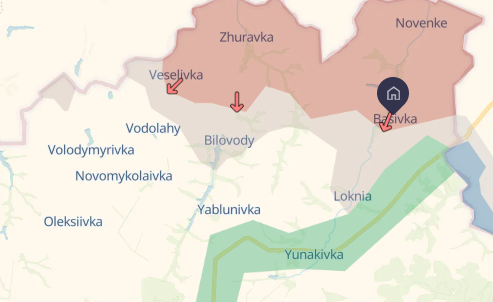
Map: Russia controls over 62.6 square kilometers in the border areas of the Sumy region (deepstatemap)
Currently, as noted by Hryhorov, the enemy continues its attempts to advance in order to create a so-called buffer zone. Combat operations are ongoing on the outskirts of the village of Vodolaha and near Volodymyrivka, Bilovody, Kostiantynivka, and Kindrativka in the Khotin community, as well as on the outskirts of Loknia in the Yunakivka community.
"Ukraine’s Defense Forces and all their components are keeping the situation under control, inflicting precise fire strikes on the enemy. Our defenders decisively repel the enemy's attacks and prevent them from advancing deeper into the Sumy region," added the head of the Sumy Regional Military Administration.
The enemy is attempting to expand its incursion into the Sumy region
As reported to RBC-Ukraine by the spokesperson of the State Border Guard Service, Andriy Demchenko, Russian forces have begun expanding the use of small assault group tactics in the Sumy region.
According to him, the Russian forces are deploying foot-borne assault groups that cross the border on quad bikes or motorcycles, relying on speed to penetrate deeper into Ukrainian territory. After breaching the border, they attempt to entrench themselves, often in trenches or temporary shelters, and await reinforcements for further operations by larger units.
He also mentioned that such enemy groups are most active near Basivka and Zhuravka, but recently, according to Demchenko, activity has been shifting westward, toward Veselivka and Volodymyrivka.
"These are systematic actions by the enemy. We are observing how their activity zone is expanding. While previously it involved Novenke, Basivka, and Zhuravka, now we see the attempts to break through in other directions as well," Demchenko said.
The spokesperson noted that this tactic has been used for several weeks, despite significant losses suffered by Russian forces due to the actions of Ukraine's Defense Forces.
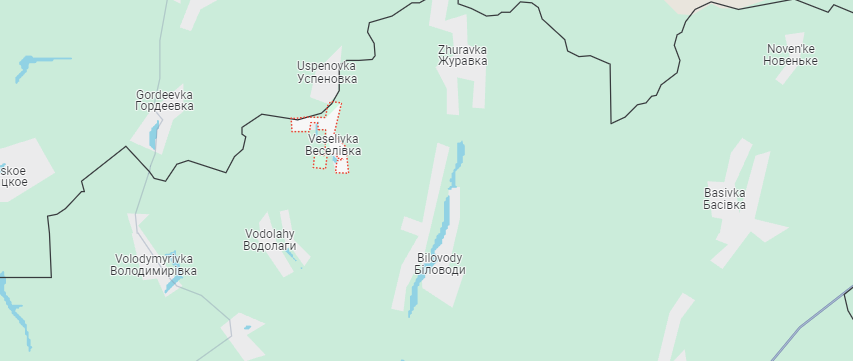
Map: settlements where the enemy is active (deepstatemap)
In addition, daily shelling of border areas in the Sumy region continues. Russia uses artillery, drones, and aviation.
Demchenko also emphasized that the Sumy region currently sees the highest activity of Russian sabotage and reconnaissance groups along the entire border with Russia that remains under Ukrainian control.
This is especially true for the northern part of the region, closer to Chernihiv, and the southern direction, toward the Kharkiv region. In the central part of the Sumy region, the enemy continues to use small assault group tactics.
"Ukraine's Defense Forces and border guard units are actively working to detect and destroy these groups, both those who have already crossed the state border and those identified during their approach," Demchenko summarized.
Russian troops concentrate forces opposite Sumy region
Vadym Mysnyk, the spokesperson for Ukraine's Siversk operational-tactical group, responsible for the Chernihiv region, Sumy, and part of the Kharkiv region, also confirmed that Russian forces have amassed certain troop concentrations in the Kursk region and are trying to expand the area of active hostilities in Sumy region by sending in small infantry groups.
"Ukraine’s Defense Forces destroy the enemy as much as possible, preventing them from advancing deeper into our territory. The enemy's tactics remain practically unchanged. They are now trying to conduct combined strikes using all available means, both from the air and with ground forces," Mysnyk said.
He explained that enemy infantry mainly moves on motorcycles and quad bikes, since heavy military equipment cannot operate effectively in those areas.
"We identify and destroy them in time. The enemy is trying to exploit numerical superiority, trying to break through, amass, and consolidate," Mysnyk added.
According to him, despite losses, the Russian forces continue conducting a kind of reconnaissance-in-force in various directions, probing Ukrainian defenses to use artillery and air strikes in the future.
However, when asked whether the situation in the Chernihiv border area can be considered calmer compared to Sumy, he said such comparisons are incorrect and explained why.
"Because the Chernihiv region has half the border length with Russia compared to Sumy. Just yesterday, the Russians launched airstrikes with guided bombs on the Chernihiv region. And they constantly do this all along the border. We are observing a military presence," Mysnyk stated.
Thus, he says, the Russian forces are trying to keep Ukrainian forces under pressure, containing Ukrainian units, and preventing them from redeploying to more intense areas of the front.
"But of course, the highest concentration of enemy forces - both in terms of shelling and manpower - is opposite the Sumy region, specifically in the Kursk area," added the spokesperson of the Siversk operational-tactical group.
"Russia wants to advance toward Sumy"
According to Ihor Romanenko, former Deputy Chief of the General Staff of the Armed Forces of Ukraine and a military expert, the main goal of the enemy's attempts to advance further in Sumy region is not to create a so-called buffer zone.
"A sanitary, buffer zone, call it what you like, I think this is not (Putin's - ed.) goal... The real objective is to move closer to Sumy, to create threats, to reduce the distance to this regional center, so that not only drones, aviation, and guided bombs can be used against it, but also a cheaper method of destruction that they often rely on - artillery. Various multiple launch rocket systems, tube artillery - any kind," Romanenko said in a comment to RBC-Ukraine's YouTube channel.
He recalled that Russia's plans regarding the Sumy region date back to about a year ago, alongside intentions to launch an offensive on the Kharkiv region. The Russian forces began their actions by advancing toward Vovchansk and Lyptsi. However, Ukrainian troops continue to hold the defense there.
As for the Sumy region, the Ukrainian Defense Forces, having carried out a surprise operation in the Kursk region, managed to disrupt the enemy's plans to advance in that area.
"But there weren't enough forces, because the enemy later concentrated a group of 65,000 troops in the Kursk region. They deployed modern units there, including so-called elite forces, as well as a dedicated unit of FPV drones operating via fiber optic cable - drones that our electronic warfare systems couldn't jam. Because of this, the Russians were able to cut off logistics routes from Sumy to Sudzha. Consequently, they effectively pushed our forces out of the Kursk region," Romanenko recalls.
Could larger-scale actions begin, but not in the Sumy region?
Currently, Putin's objective is not only to capture the four Ukrainian regions (Luhansk, Donetsk, Zaporizhzhia, and Kherson) that Russia has written into its constitution. While Russia is trying to expand its buffer in the Sumy region, there is also talk of activity in the Kharkiv region, the expert notes.
"There, the enemy is assembling a troop grouping. According to various foreign intelligence assessments, it is about 50,000 troops. And from Pokrovsk, they're advancing southwest toward Novopillia - in other words, moving in the direction of Dnipropetrovsk region. It's not just about military success, although any advance means capturing our territory and people. But beyond that, Putin is personally pursuing a military-political ambition, claiming that yet another region is under the control of the Russian Armed Forces. That's the current situation," Romanenko explains.
Regarding the threat of a larger-scale offensive from the north, the expert believes that the Kharkiv region is the primary concern.
"As for Sumy region, Russian troops are already present there and are advancing even with their current forces. But in the Kharkiv region, there's growing activity. Near Vovchansk, there is a settlement called Tykhe where we are seeing increased activity, although it's not yet as intense as the Russians would like it to be, compared to what is happening in Sumy region," Romanenko notes.
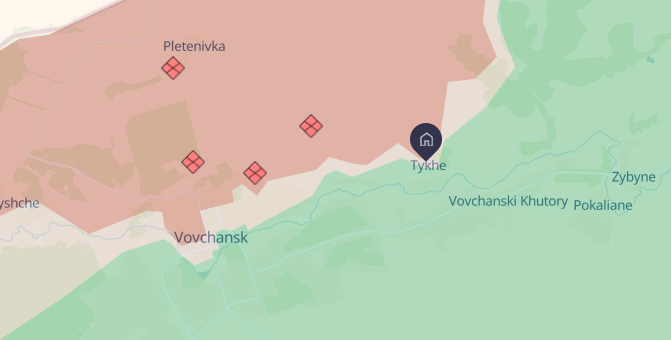
Map update: the enemy is conducting offensive operations towards Tykhe in the Kharkiv region (source: DeepStateMap)
The DeepState project also notes recent changes on the battle map to the northeast of Tykhe. Although the first serious enemy attempts began around April 13–15, when Russian forces conducted several days of assault operations, the initial advances occurred back then. In recent weeks, the enemy has occasionally tried to improve its tactical position and has succeeded.
According to analysts, the goal of Russian forces who were defeated in Vovchansk was to try to bypass the settlement from the left or the right. As a result, the Russian army is assaulting the right flank of the Ukrainian forces.
"Russians are amassing corresponding forces on their territory, north of our groupings. There is a likelihood that they will intensify efforts in this direction and attempt a more energetic advance in the Kharkiv region," Romanenko concluded.
It is worth recalling that President of Ukraine Volodymyr Zelenskyy recently stated that Russian troops have been conducting active offensives along the entire frontline for several months. According to him, the main focus of their efforts is the Sumy direction.
"Their offensive actions began in all directions. The main direction was the Sumy direction, where 67,000 troops were concentrated. We took appropriate steps to prevent them from uniting," Zelenskyy said.
More on Russia's plans on the frontlines can be found in the material by RBC-Ukraine.
Sources: data from DeepState maps, statements from the head of the Sumy Regional Military Administration Oleh Hryhorov, spokesperson for the Siversk operational-tactical group Vadym Mysnyk, and exclusive comments from Border Guard Service spokesperson Andriy Demchenko and military expert Ihor Romanenko.
